8 Tips You Need For Curing Egg Yolks
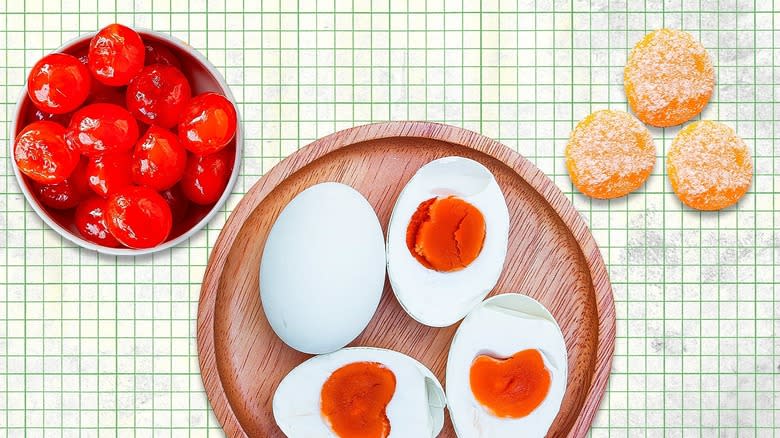
For an easy way to elevate your recipes, look no further than cured egg yolks. The condiment — which is a popular food in Japan and Korea — is equal parts salty and rich, making it a decadent topping for dishes like avocado toast, ramen, or meats. Cured egg yolks are also known as "umami bombs," and for good reason, too; the curing process intensifies the natural umami flavor of the egg yolks, resulting in a deliciously savory ingredient.
If you're unfamiliar with curing egg yolks, it's the process of preserving egg yolks in a salt mixture. When the egg yolks are packed in salt or another curing medium, the moisture is drawn out, and this concentrates the fat and enhances the taste. It also slightly hardens the egg yolk, transforming its typically runny consistency into a creamy texture similar to cheese. In fact, the consistency of a cured egg yolk is so thick that you could grate, shave, or slice it and use it on soups or salads, just like you would cheese.
Curing egg yolks is an excellent way to use up leftover egg yolks after making an egg white-heavy recipe, such as meringue. Not to mention, a batch of homemade cured egg yolks is sure to impress your guests at your next dinner party. Whether you're new to curing egg yolks or looking to perfect your method, these tips and tricks will help you make the best-cured egg yolks possible.
Read more: The 20 Best Olive Oils For Cooking
Start Curing Egg Yolks In Advance
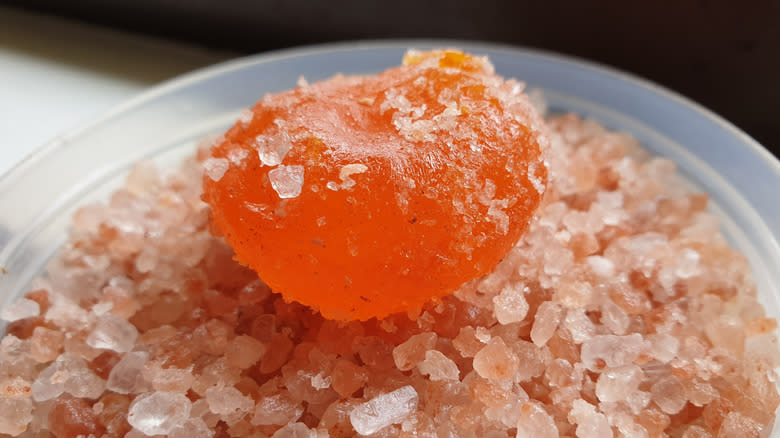
As with other preservation methods, curing egg yolks takes time, so you'll need to start the process (about one week) before you need them. This is especially important if you'd like to use them for a special occasion or meal. Fortunately, they'll keep for about one month in the refrigerator, so you can begin the process even earlier to ensure the egg yolks are ready in time. The long shelf-life is helpful if you're new to curing egg yolks, as it gives you a chance to experiment and discover the perfect curing time for your desired texture.
The good news is that curing egg yolks doesn't take much involvement from home cooks; you won't need to do much during the process. After preparing the salt mixture and adding the yolks, pop everything in the refrigerator and wait for the eggs to dry over the next week. Depending on your specific recipe, you might need to bake or dehydrate the egg yolks until completely dry or firm after the curing process has occurred.
Try It With Duck Or Quail Eggs
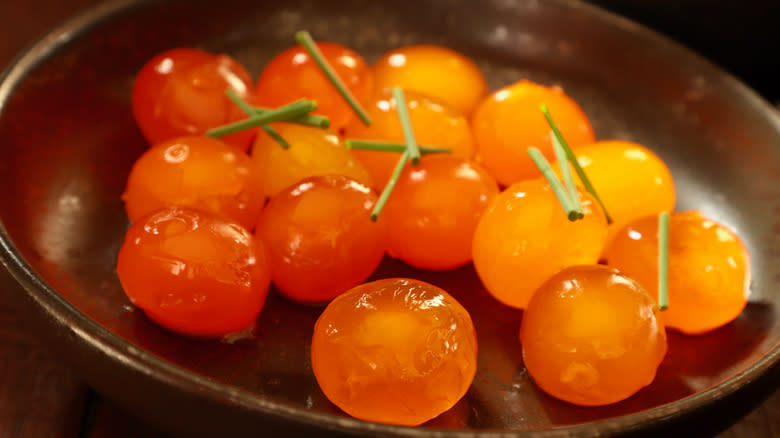
Did you know that you're not limited to chicken eggs? For more decadent "umami bombs," use duck eggs instead of the standard chicken egg. Not only are duck eggs bigger than chicken eggs, but they're also fattier and with more protein, so the yolks have a richer flavor. What's more, they're also creamier in mouthfeel than chicken eggs, so you can only imagine how satisfying a cured duck egg yolk will taste.
When it comes to curing these yolks, you'll still need about 4 to 7 days, similar to chicken eggs. Many recipes also call for additional curing time in which the duck yolks are air-dried and suspended in a cheesecloth rather than baked or dehydrated. Check out specialty grocery stores, local farms, or farmer's markets for duck eggs.
On the other hand, if you have a penchant for all things tiny, use quail eggs to make mini-cured egg yolks. At about ⅓ the size of a chicken egg, a quail egg is an adorable alternative. But don't let their size fool you — like duck eggs, quail eggs are creamy and with a wilder flavor full of minerality and slight gaminess. The process of curing is relatively similar, but you should be sure to dehydrate your cured quail yolks in an oven at low temperature or with a dehydrator. You'll end up with delicious cured egg yolks. You can find quail eggs at specialty Asian supermarkets or warehouse stores like Costco.
Use Pasteurized Eggs
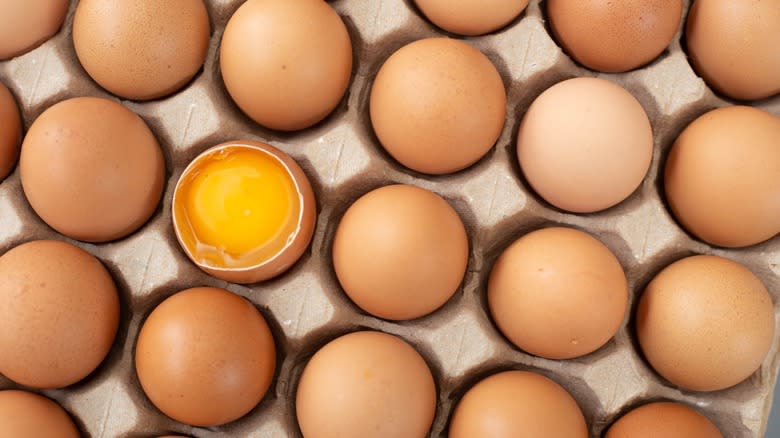
Some recipes for cured egg yolks don't call for baking, meaning the final product is completely raw. If you'd like to follow this type of recipe and you're concerned about salmonella, be sure to use pasteurized eggs. This is particularly important when you're serving cured egg yolks to people at high risk for foodborne illness, such as those with compromised immune systems and pregnant or older people.
Pasteurization involves exposing eggs to gentle heat while they're in their shells, which kills bacteria but doesn't cook the egg white or yolk inside, making them safe to eat as is. However, it's worth noting that pasteurized eggs might be hard to find at most grocery stores, as eggs aren't usually pasteurized in the U.S. This might be tricky when making dishes from Japan, where all eggs are already pasteurized. If you're unable to find pasteurized eggs, try pasteurizing them at home or sticking to recipes that involve baking.
Use Soy Sauce For Umami Flavor
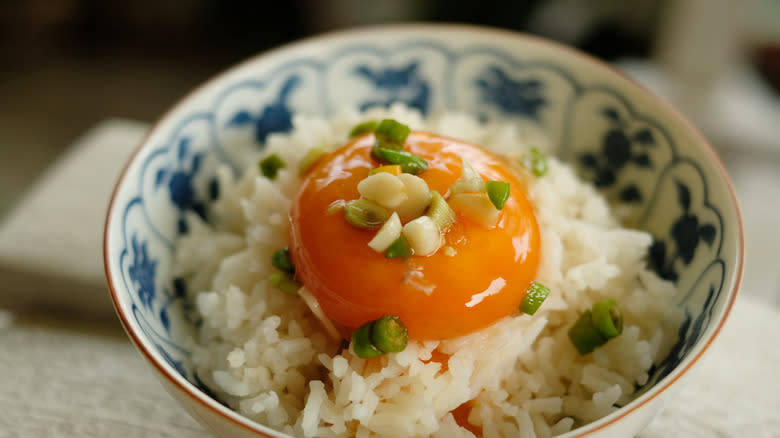
Although salt and sugar are the go-to ingredients for curing egg yolks, they are not the only option. You can also cure egg yolks in soy sauce for a heightened umami flavor profile. In Japan, the preparation is known as shoyu zuke ranou, or soy sauce marinated egg yolk. The marinade is made of soy sauce plus rice vinegar, sugar, and mirin, a type of rice wine that's high in sugar and low in alcohol. You can also use white vinegar, though rice vinegar is sweeter and less tangy.
Plus, this riff on cured egg yolks takes less time than the salt version. After combining the ingredients, you'll add the egg yolks to the mixture, then let them cure for at least a few hours — though you can let them sit for about 3 days for a stronger flavor if you'd like. Note that the yolks will float in the marinade, so flip them over halfway to ensure both sides are evenly cured and flavored. Another thing to remember is that this form of curing egg yolk does not cook them and leaves the same potential for food-borne illness as raw egg yolks.
Make It Sweet With Honey
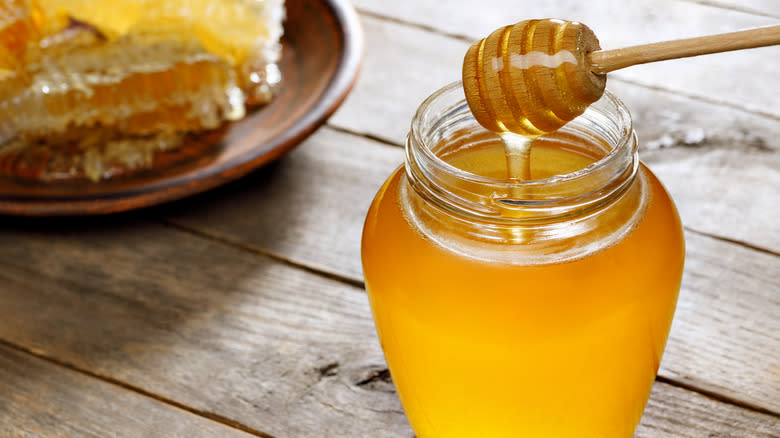
Instead of a salty ingredient, use honey to cure egg yolks. The sugar in the honey will work like salt, removing moisture from the egg yolk and concentrating its texture. To make the savory-sweet concoction, place egg yolks in a container and add enough honey to cover them. Seal the container and store it in the refrigerator; after about 3 to 5 days, the egg yolks will become wonderfully jammy and spreadable.
While you're at it, feel free to experiment with different types of honey. For example, if you want a spicy kick, use store-bought hot honey or mix honey with red pepper flakes, chili flakes, and a bit of apple cider vinegar. If you love citrusy notes, combine honey with a splash of fresh lemon or lime juice. No matter your take on this dish, the result will be delicious; enjoy a honey-cured egg yolk on a slice of crusty bread, pizza, or even meat dishes like pork chops or ham. You could even use the honey-cured egg yolk as a condiment in a sandwich.
Flip The Egg Yolks Regularly
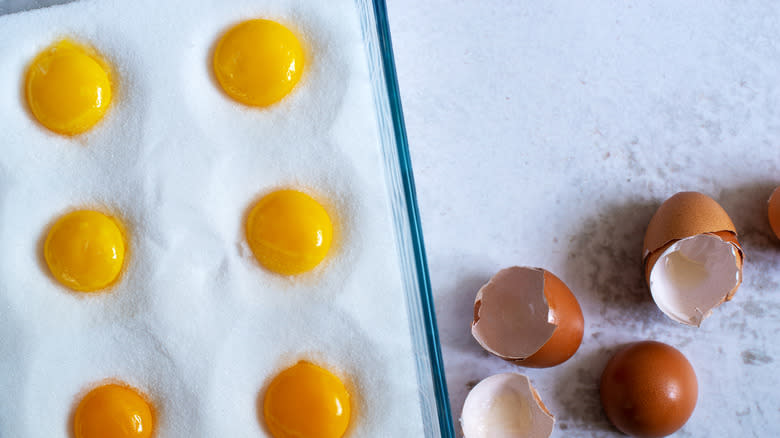
Whether you're curing egg yolks in salt, soy sauce, or honey, it's important to flip them at even intervals. This could be halfway through the curing process (for shorter curing times) or every 12 hours (for longer timelines). By flipping the egg yolks regularly, you'll ensure each side is exposed to the curing agent, paving the way for fully cured egg yolks and a tasty, uniform flavor. It's especially important to do this when curing in soy sauce, as the yolks will float on the top instead of being surrounded by the ingredient.
When flipping the egg yolks, use a spoon; the curved surface will help safely cradle it. Avoid using utensils like forks or tongs, as these tools might accidentally pierce the yolk before it's fully cured and hardened. Additionally, take extra care early on in the curing process when the yolk contains more moisture and has a more runny texture.
Add Seasonings And Spices
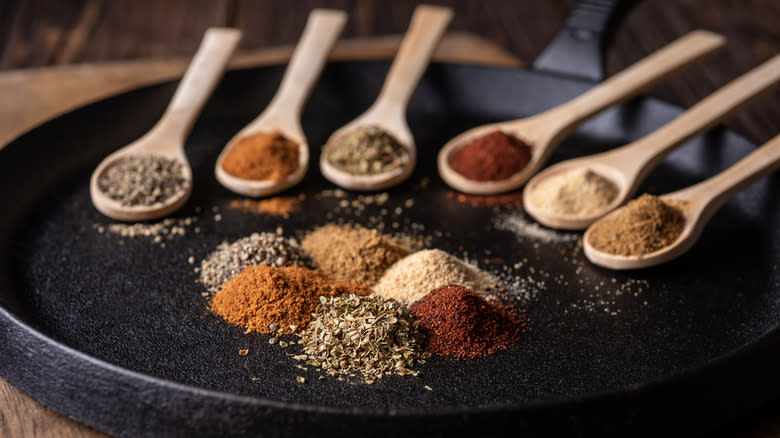
For even more flavorful cured egg yolks, add different seasonings and spices to your curing mix. Dried herbs like parsley, thyme, and dill will take the savory notes up a notch, while dried seaweed flakes or mushrooms will add even more umami notes. Craving some heat? Add chili powder, paprika, curry, cayenne pepper, or red pepper flakes to the salt, soy sauce, or honey before adding the egg yolks. If you have lemons, limes, or oranges on hand, try zesting the peel and adding it to the dish. Just be sure to avoid the white pith, which has a bitter flavor.
Feel free to mix and match these add-ins, too. If you're unsure where to start, consider the dish you'd like to serve with the cured yolks, as well as ingredients that would pair well with it. For example, to make a delectable ramen topping, cure the egg yolks with a combo of dried seaweed and garlic powder for a tasty upgrade.
Add Smokiness With Wood Chips
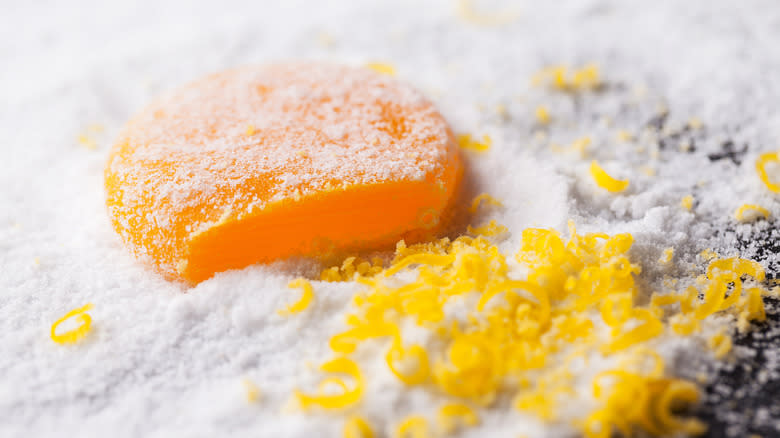
If you love deep and complex flavors, elevate your cured egg yolks with cold smoking. This technique is used to make smoked cured egg yolk bottarga; cold smoking involves placing wood chips in a cast-iron pan lined with aluminum foil. As you heat the pan, the wood chips will smoke. You'll place a wire rack with cured egg yolks over the pan. This will expose the egg yolks to the smoke, but it won't cook them.
It's important to leave the egg yolks uncovered during the process. The wire rack should also be above the pan (not in it), which will allow the smoke to surround the egg yolks. If the wire rack is too close to the heat, you might accidentally cook the egg yolks. Once the egg yolks are done smoking, let them dry at room temperature for 3 days, then enjoy them as a buttery topping for pasta, salad, soup, or toast.
Read the original article on Tasting Table.

